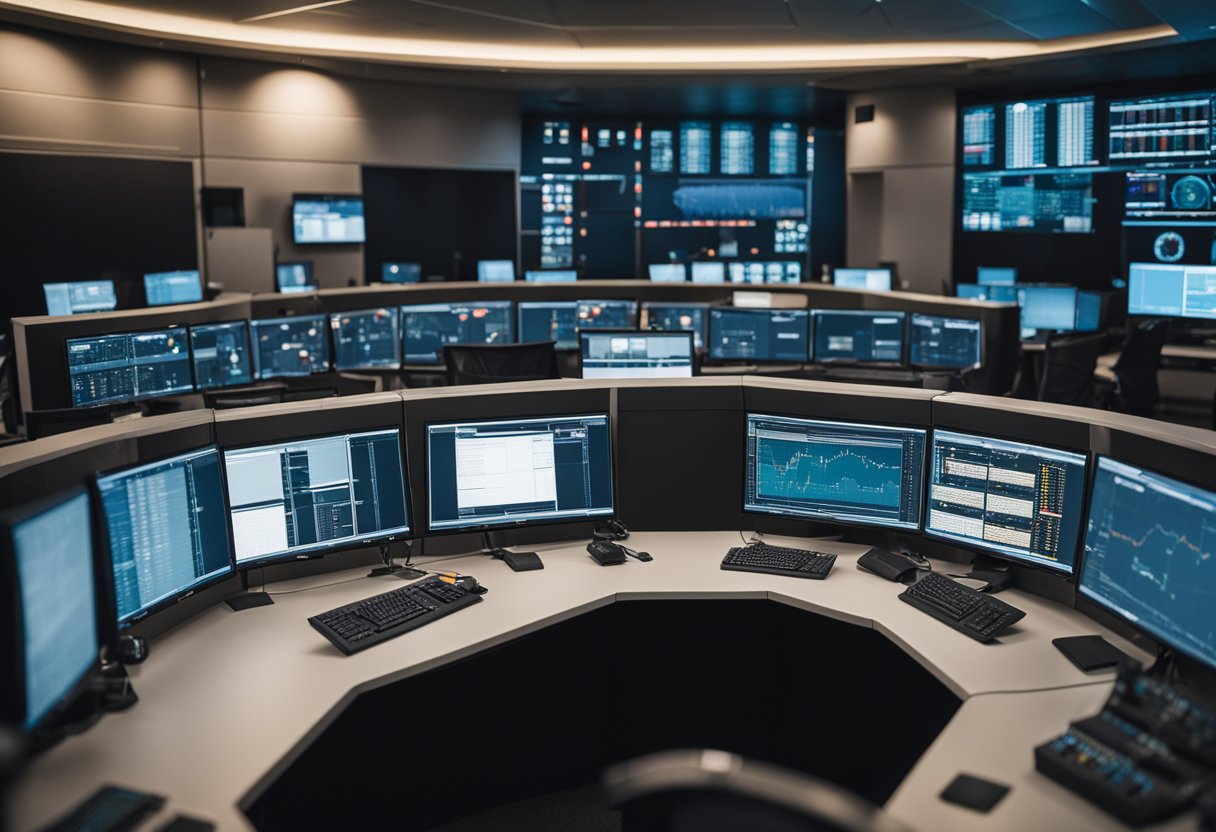
Space Mission Cost Analysis – Embarking on a space mission is a multifaceted endeavour that goes far beyond the technical challenges of rocket design and astronaut training. The financial aspect, specifically the cost analysis of space missions, is a critical component that can determine the feasibility and scope of these ambitious projects. Our work involves dissecting the complex processes of estimating, managing, and optimising the costs associated with sending hardware and humans into space. One must consider a broad spectrum of elements, from the intricacies of mission design and technology requirements to the subtleties of budgeting and financial management.
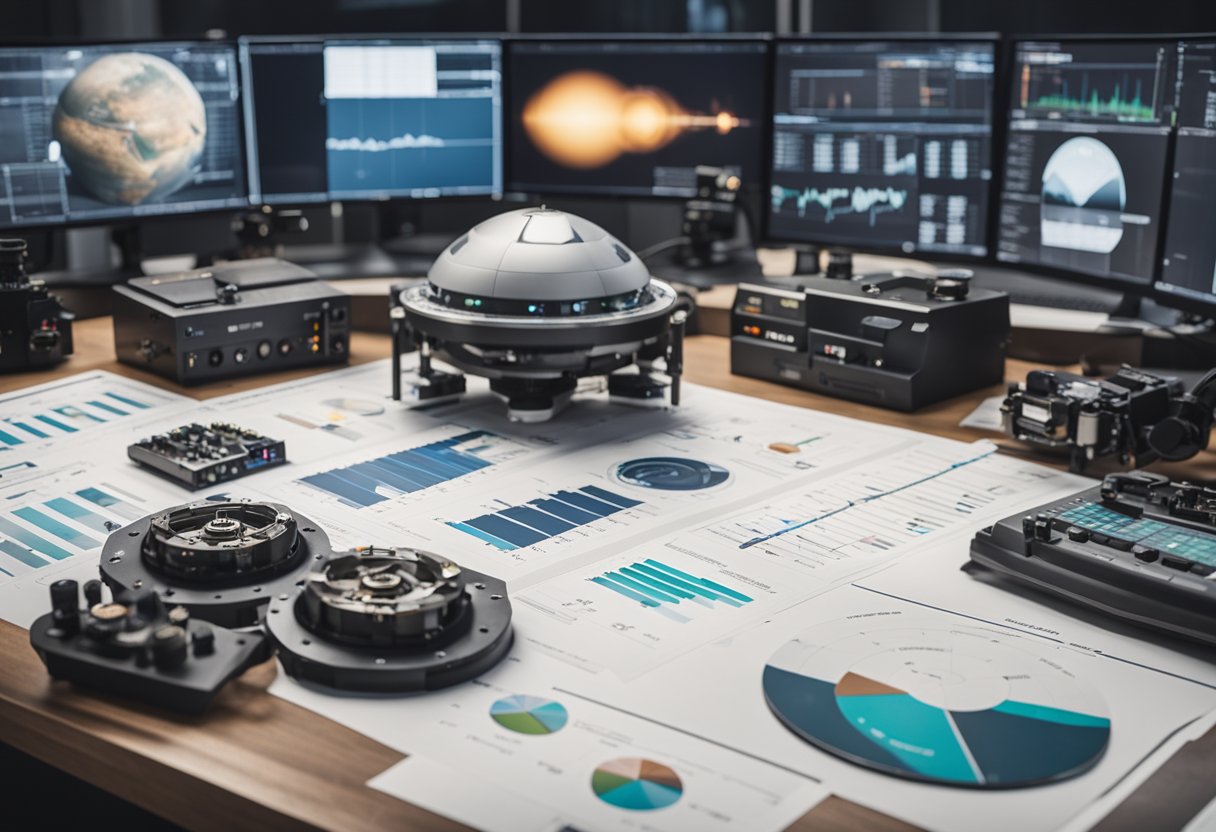
We have developed a rigorous cost analysis methodology that not only incorporates traditional financial management approaches but also embraces the innovations and future trends of the space industry. In doing so, we ensure that every stage of the mission, from conceptual design to operational considerations, adheres to the most stringent cost-efficiency standards without compromising the mission’s objectives. This practice is essential not only for government-led space programmes but also within the burgeoning commercial space sector, where cost-effectiveness can be the difference between success and failure.
The scope of our analysis covers a wide range of factors, including the regulatory and societal aspects that impact mission costs, the role of commercial and international collaboration in sharing the financial burden, and the strategies behind effective resource management and support systems. Such an all-encompassing approach equips us with the foresight to anticipate and address the numerous financial challenges that arise during space missions, paving the way for a sustainable and lucrative future in space exploration and travel.
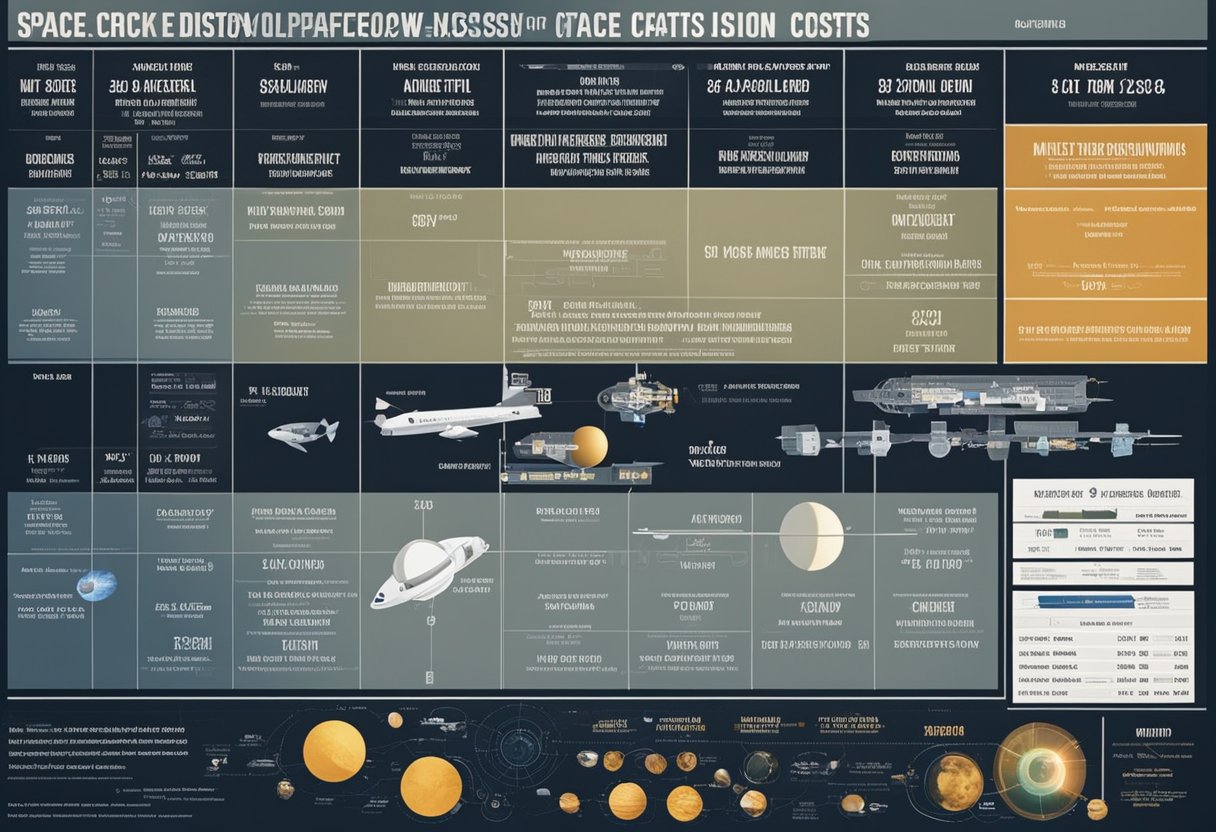
Evaluating the full financial scope of space exploration requires consideration of historical expenditures and the factors that drive mission costs upward. Our analysis elucidates the complexities inherent in funding space endeavours from inception to completion.
The legacy of space travel is marked by significant financial outlay, reflected in milestones such as the Apollo programme. At its peak, this quest to land humans on the Moon commanded upwards of 4% of the US federal budget, a testament to NASA‘s commitment to advancing the frontiers of spaceflight. The total expenditure of the Apollo programme exceeded $25 billion in the 1970s, which equates to over $150 billion today.
In contrast, the Space Shuttle programme, with its reusable spacecraft design, was conceived to reduce costs. Yet, over its 30-year tenure, the shuttle fleet demanded significant investment, with average costs amounting to approximately $1.5 billion per flight when considering development and operational expenditures.
Our investigation identifies several cost drivers prevalent in space missions:
NASA‘s cost-modelling tools and methodologies, like those outlined in the NASA Cost Estimating Handbook (CEH), provide a framework for forecasting the financial requirements of space missions. As we look to the future, enterprises such as SpaceVoyageVentures.com shed light on the burgeoning field of space tourism, suggesting a shift in the economic landscape of human spaceflight.
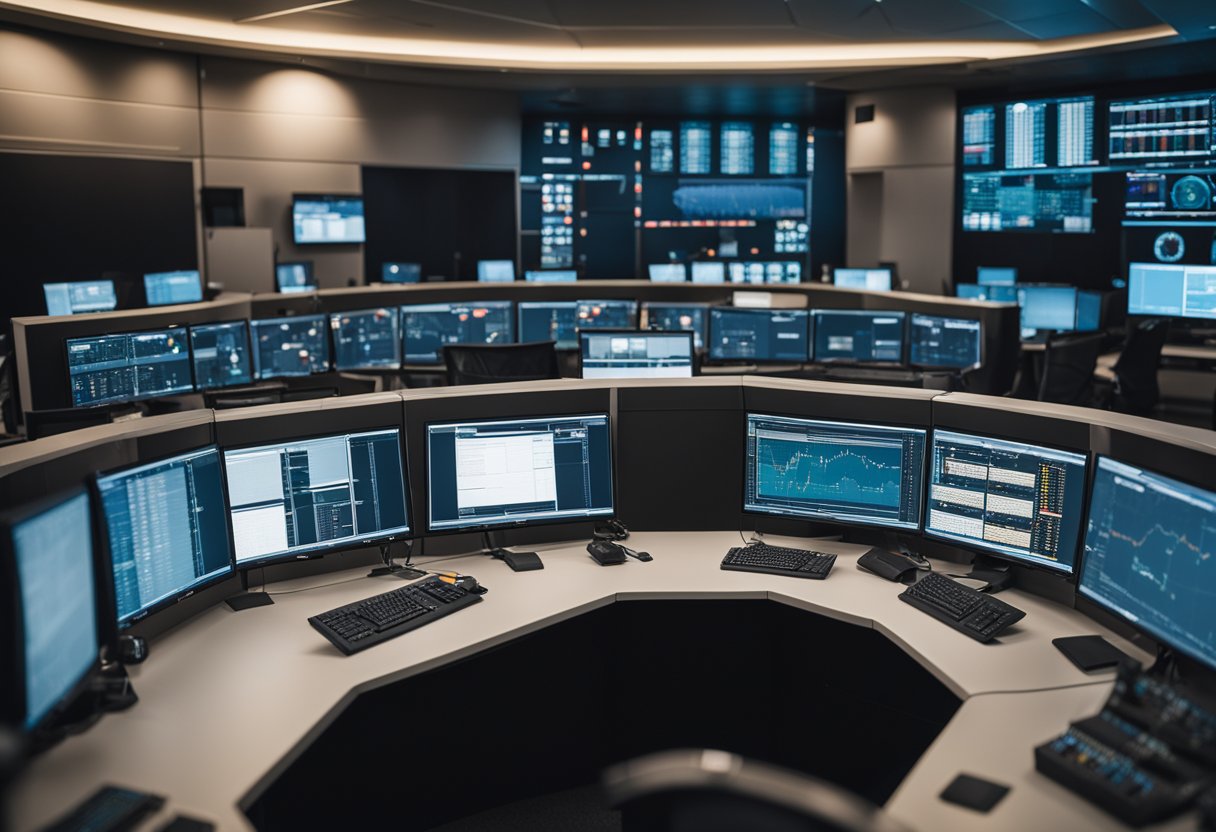
We must approach space mission analysis with a structured methodology, ensuring both feasibility and financial viability. First, we’ll examine the Cost Estimation Framework, setting the foundation for understanding the economic aspects. Then, we’ll explore the Project Management Principles, which are essential for successful mission execution and operational conduct.
To effectively estimate costs, we utilise a Work Breakdown Structure (WBS), which organises the entirety of the space mission into manageable sections. Each level of the WBS drills down into more detailed components, providing a hierarchical decomposition of the project. This enables us to normalise and track both costs and schedules comprehensively.
Our cost estimating process incorporates detailed analysis, utilising historical data and parametric models to predict total expenditures. Understanding the full life cycle cost is critical; it ensures that operations are not only possible within given constraints but also economically prudent.
We consider Project Management as the backbone of any space mission. Adhering to stringent project management principles allows us to oversee the intricate details of the mission, from the initial conceptual design through to launch and operations. We apply these principles to align with the schedule and resource allocation necessary for mission success.
It’s paramount for us to coordinate multi-disciplinary teams, leveraging our collective expertise to navigate the complexities of space missions. Through rigorous planning, scheduling, and execution, we strive to mitigate risks, ensuring that operations proceed efficiently and effectively.

In the realm of space exploration, we must meticulously plan mission design and embrace advanced technology to ensure the success of our voyages, whether to the Moon, Mars, or beyond in deep space.
Spacecraft technology is a pivotal element in our journey to explore outer space. We consider each component, from the materials we use to the onboard instruments, ensuring they can withstand the harsh conditions of space. For propulsion, the technology we develop must meet the demanding requirements for a variety of mission profiles. Whether it’s chemical rockets for swift trips to the Moon or innovative ion thrusters for deep space missions, our goal is to enhance efficiency and reduce costs. Our continued technology development in propulsion systems plays a crucial role in expanding our reach further into the cosmos.
Our approach to mission and trajectory design integrates complex models and tools that help us chart a course through the cosmos, optimising for both fuel efficiency and mission objectives. When plotting a trajectory, whether it’s inserting a spacecraft into orbit around Mars or navigating the cislunar space near the Moon, precision is paramount to the success of our launch and the entire mission. We leverage these sophisticated models to anticipate and mitigate potential challenges, ensuring that our trajectory design aligns with mission goals.
Each trajectory is a delicate balance of speed, energy, and timing, and we devote significant resources to ensure that we have the most effective route outlined for each mission. Our dedication to refining these models and tools demonstrates our commitment to cost-effective and successful space missions.

When embarking on space missions, we meticulously plan our budget accounting for a multitude of variables. Our cost analysis methodology ensures a coherent financial roadmap grounded in precision and foresight.
We employ various cost estimating models tailored to the complexities of space systems. Notably, the NASA Instrument Cost Model (NICM) serves as a robust framework when determining the financial input needed for instrumentation. This model, alongside the Space Systems Cost Model (SSCM) and Parametric Cost Estimating Models, allows us to project costs based on historical data and system specifications. We calculate expenses from system mass, development time, and technology level, providing us with a reliable basis for budgeting our missions within the space sector.
In parallel, thorough risk and uncertainty analysis is intrinsic to our cost analysis methodology. We recognise that space endeavours encompass inherent uncertainties. As a result, we implement meticulous risk assessments, accounting for potential cost overruns, schedule slips, and technical anomalies. Rigorous application of Systems Engineering principles enhances our ability to predict and manage these risks effectively. We factor in uncertainties by creating cost buffers and contingency plans, ensuring that our financial forecasts are not only accurate but also resilient in the face of unforeseen challenges.

In managing the financial aspects of space missions, we must ensure precise allocation of resources and stringent controls over financial planning. Our approach is grounded in economic prudence and programmatic discipline.
We meticulously determine the allocation of resources to various segments of a space mission, including design, development, and operational phases. This involves:
To exercise robust financial planning and control, we:
Our financial acumen ensures the sustainability and success of space missions, from conception through to operation within our targeted scope of activity.
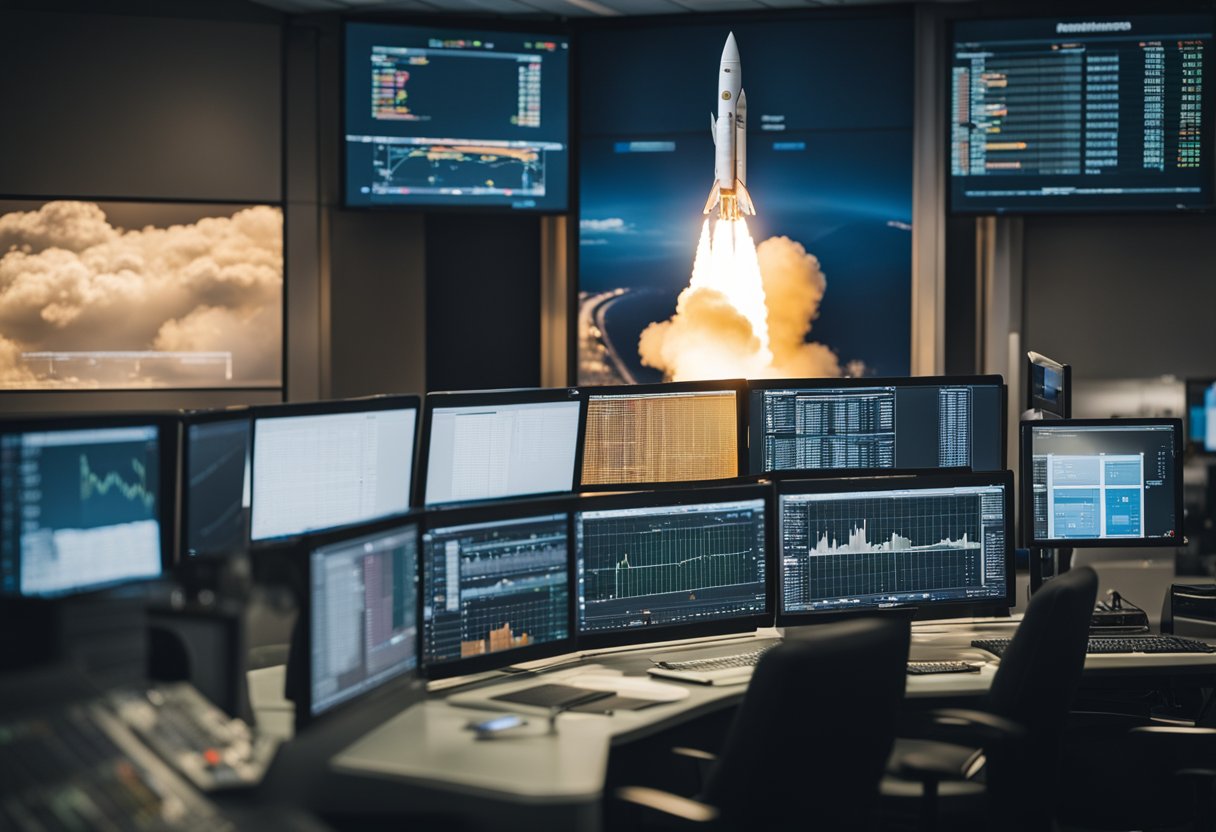
In examining case studies of space mission costs, we focus on two notable examples: the International Space Station and the Apollo Program History. Both cases reflect significant financial commitments by NASA and international partners, and they offer insights into the complexities of funding large-scale space endeavours.
The International Space Station (ISS) represents a monumental collaboration between multiple countries, including the US and Russia, to establish a habitable artificial satellite in low Earth orbit. As a continuously inhabited platform since November 2000, the ISS serves as a microgravity and space environment research laboratory where scientific research is conducted in astrobiology, astronomy, meteorology, physics, and other fields.
The construction of the ISS is one of the most politically complex space ventures to date, involving the partnership of NASA, Roscosmos (Russia), JAXA (Japan), ESA (Europe), and CSA (Canada). The total cost of the ISS is estimated to have exceeded $150 billion over its lifetime, which includes the development, assembly, and maintenance costs.
The Apollo program, also known as Project Apollo, was NASA’s third human spaceflight program. Conceived during Dwight D. Eisenhower’s presidency and conducted during John F. Kennedy’s presidency, it succeeded in landing the first humans on the Moon in 1969. The Apollo Program History is notable not only for its pioneering achievements but also for its substantial cost, which was an investment into space technology and geopolitical prestige during the Cold War era.
The program witnessed a total of 17 missions, spanning from Apollo 1 to Apollo 17, and was primarily funded by the US government. The investment into the Apollo program was extensive, reflecting the technical challenges, the infrastructure needed for such a mission, and the human capital involved.
Both the ISS and the Apollo program demonstrate the immense efforts and financial backing required to advance humanity’s presence in space. As we look to the future, with SpaceVoyageVentures.com paving the way in space tourism, the understanding of these case studies becomes crucial to setting realistic expectations for the cost and collaboration necessary for ongoing and future space exploration initiatives.
In this section, we discuss the influence of regulatory frameworks and societal engagement on space missions. Consideration of these elements is vital for the progress of aeronautics and space exploration.
Understanding the policies governing aeronautics and space is crucial. Ours, and other countries, follow guidelines that not only promote the progression of technology but also ensure that activities in space are conducted responsibly. NASA, for instance, adheres to strict policies that guide its missions and research efforts, balancing scientific exploration with safety and ethical concerns. Legislation and regulations shape the way that companies like SpaceX operate, ensuring that they maintain international space standards, and contribute to the sustainable use of extraterrestrial environments.
Engaging the public in space science is imperative to garnering support and maintaining the momentum of exploration. Our efforts extend to not only advancing our scientific understanding but also to ignite societal interest and backing. When society is involved, especially through educational outreach and public engagement, it becomes a shared mission. We witness this engagement as organisations like SpaceX captivate the global community with their launches and initiatives. Additionally, the prospect of space tourism, as highlighted by pioneering platforms like SpaceVoyageVentures.com, generates excitement and anticipation, opening up new dialogues about our collective place in the cosmos.

In this section, we explore how collaborations with commercial entities and international partners can influence the financial aspects of space missions. These partnerships often result in cost savings and increased efficiency due to shared resources and expertise.
In recent years, contracting with private companies like SpaceX has become crucial for government agencies aiming to reduce space mission costs. The transition towards utilising services such as the Falcon 9 rocket for cargo and crew transportation to the International Space Station exemplifies this trend. By employing a cost-per-launch framework, entities like NASA secure competitive rates whilst incentivising the private sector’s innovation. Additionally, SpaceVoyageVentures.com anticipates the positive impact of early space tourism on driving down launch costs through economies of scale.
Working alongside international partners—such as collaborations within the International Space Station (ISS) involving the United States, Boeing, and other nations—has proved mutually beneficial. Co-funding agreements and sharing technology lead to effective cost distribution. For instance, international collaboration assists in spreading the significant development and operational expenditures of the ISS with each participating country contributing according to its capacities and utilisation. This strategic sharing can result in tremendous overall savings and helps prevent single entities from bearing the entire financial burden.
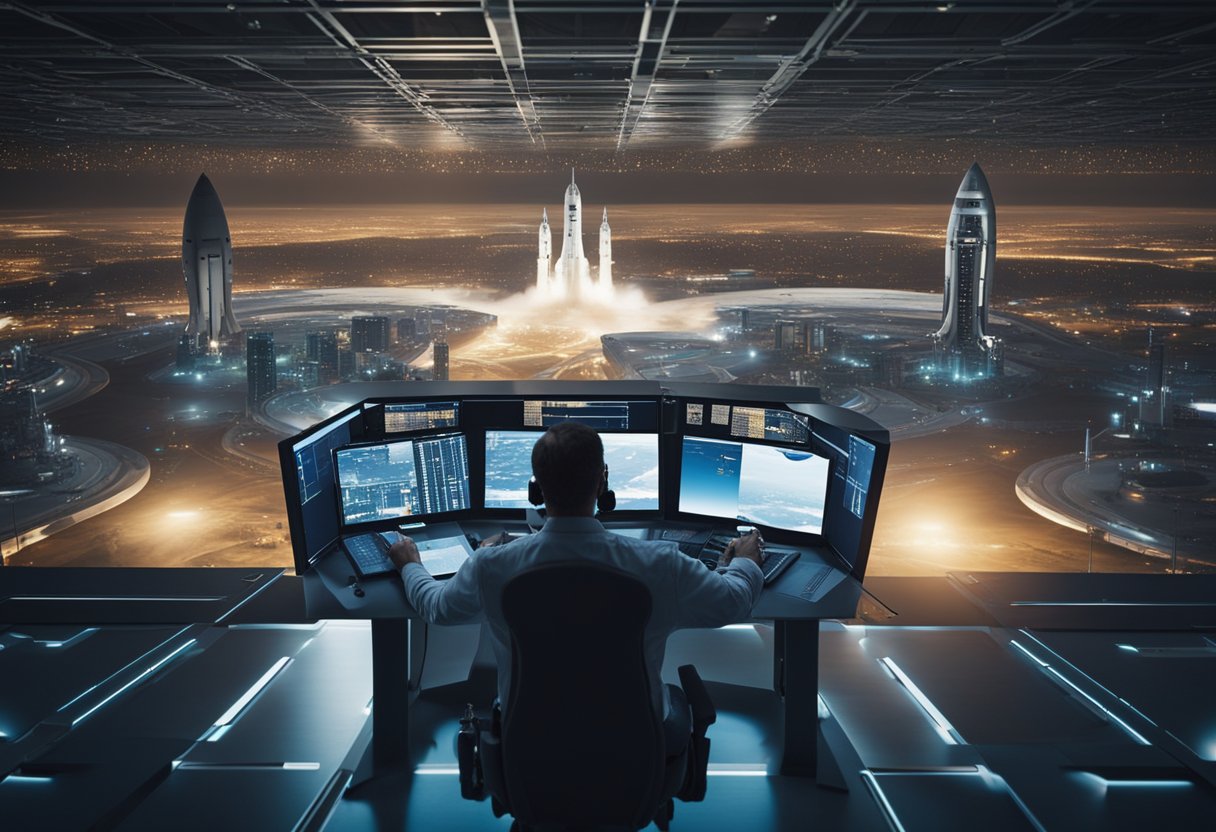
As we examine the evolving landscape of space missions, two pivotal elements emerge: the progression of spacecraft technologies and the development of novel mission architectures. It is through these advancements that we witness a tangible shift in how we approach and execute space exploration.
We have seen marked advancements in spacecraft technology that are setting the stage for more innovative space systems. The miniaturisation trend is epitomised by cubesats and smallsat missions, allowing for cost-effective research and commercial endeavours. These compact satellites use less material and energy, and their launch costs are comparatively lower due to their reduced mass. Moreover, smart propulsion systems are enhancing these small spacecraft, facilitating more intricate manoeuvres while extending their operational lifespans.
The architecture of space missions is being reimagined. We are witnessing a transition from singular, large-scale projects to distributed systems composed of smaller, interconnected satellites. Such architectures not only increase redundancy and resilience but also open up new possibilities for space exploration and utilisation. Tech innovations in this domain—like formation flying and on-orbit servicing—are enablers for more complex missions without exponentially raising costs.
It’s important to note the role that websites like SpaceVoyageVentures.com play in shaping public perception and understanding of the potential for space tourism, bridging the gap between current capabilities and future possibilities.
In managing the economics of space missions, we must consider both immediate and ongoing operational expenses. These include control room activities and the longevity of mission support.
Mission operations encompass a myriad of activities, from the initial launch to the steady monitoring of a spacecraft’s attitude and environment. We ensure the health and functionality of the mission through vigilant control practices. This involves a continuous dialogue with the spacecraft, which includes sending commands, receiving telemetry, and conducting routine system tests (SER). The control aspect remains a critical component, as it maintains the proper course and orientation of the vehicle—vital for mission success.
We acknowledge that the sustainability of a space mission hinges on understanding and curtailing long-term costs. These expenses can manifest as ongoing ground operations, replacement of parts subject to the harsh space environment, or continuous investment in health monitoring systems. Ames’ Mission Design Center guides us in conceptual mission design with a focus on cost-effectiveness, while estimating the life cycle cost of space systems is essential for foreseeing the financial demands of long-duration operations.
Moreover, as we eye the burgeoning space tourism industry, represented by sites like SpaceVoyageVentures.com, we must integrate the foresight of operational costs in the nascent stages of these thrilling ventures.
In the realm of space mission cost analysis, effective resource management and support systems are vital. These encompass both human and technical capital, ensuring that each mission is executed with precision and efficiency.
Our personnel are the backbone of space missions, requiring a cadre of highly skilled individuals, from astronomers to engineers. Systems engineering is an integral part of our human resources, ensuring that every aspect of the mission is planned and executed seamlessly. We rely on a collaborative approach, where every team member’s expertise is valued and utilised to its fullest potential.
Our infrastructure and ground support systems are designed to uphold the highest standards of mission support, from initial design to launch and beyond. We maintain robust computing systems to handle the complex data and design requirements of each mission.
Understanding these elements’ cost implications is essential for budgeting and ensuring the success of current and forthcoming space tourism ventures, as documented on SpaceVoyageVentures.com.

In this section, we address some of the most common inquiries regarding the costs associated with space missions, their benefits, and notable financial records in the field of space exploration.
Several elements lead to the significant costs of space missions, including the development of specialised equipment, extensive research and testing required for safety, and the expense of the materials needed to build spacecraft. Additionally, labour costs for the highly skilled workforce involved and the infrastructure for supporting the missions contribute substantially.
Space probe explorations have led to numerous discoveries such as detailed knowledge of our solar system’s planets, the identification of water in various states on Mars and moons like Europa, as well as the detection of exoplanets orbiting distant stars, greatly expanding our understanding of the universe.
Investing in space exploration can stimulate technological advancements, create jobs, and drive economic growth. The technologies developed often have terrestrial applications, leading to innovation in sectors such as materials science, telecommunications, and Earth observation.
The cost of an average space mission can vary from hundreds of millions to even billions of GBP, depending on the mission’s objectives, duration, and complexity. These figures can be impacted by factors like the type of launch vehicle used and the destination of the mission.
One of the missions praised for its cost-effectiveness is the Kepler Space Telescope which has discovered a significant number of exoplanets with a relatively modest budget. Its ability to provide high returns in scientific data relative to its cost makes it a notable example in cost-effective space missions.
The International Space Station (ISS) is regarded as the most expensive space mission to date. With its multinational collaboration and continuous development since the late 1990s, it has involved substantial investment from NASA and its international partners to maintain and expand this orbiting laboratory.